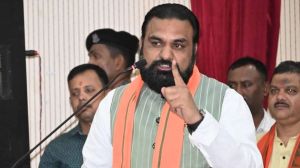Census of passion
Swans, ducks and geese found in 25 different species, 21 species of herons and egrets, may be a couple of pelicans for good measure. Bird...

Swans, ducks and geese found in 25 different species, 21 species of herons and egrets, may be a couple of pelicans for good measure. Bird-watching is an insatiable passion for the 87-year-old retired professor B.J. Uthangi. He indulges himself every January when he embarks on his annual pilgrimage of bird-counting, more specifically waterfowl census. He has been at it for 23 years and is on his way to becoming a legend in the Asian Waterfowl Census (AWC) operations.
Miles away in Mumbai, officials at the Bombay Natural History Society (BNHS) await Uthangi’s feedback of the January 1999 census. His reports are said to be among the most precise, detailed and complete received from various centres across the country. Like the octogenarian, over a thousand people from Rajasthan to Assam and Kashmir to Kerala are busy filing their reports of the 1999 census.
In the next few months, BNHS director Asad Rehmani, national coordinator for the AWC, will be ready to unveil the story of how Indians treat their birdpopulation, particularly the waterfowls and their habitat such as wetlands, marshlands and ponds. Information began trickling in from state coordinators a month ago but cross-checking the data received from over a thousand bird-watchers is a time-consuming and painstaking task.
Trends are available and they confirm our common sense conjectures: many species of waterfowls are declining, fewer species breed in Indian habitat, these are inextricably linked to the shrinking natural waterbodies in the country, wetlands across India face a serious threat of destruction. Two other trends are a source of worry too: an increasing number of waterfowls and other birds are found poisoned by pesticides and the twin games of shooting and hunting have not declined at all.
“There is much to worry from the census trends,” says Rehmani, “for us, the trends are more important than sheer numbers as you would have in, say, the people census. The trends tell a story about our environment and we human beings ought to listento it.” Reports of earlier AWC are a pointer.
“Many important wetlands in India continue to be subject to various uses and threats. It has become possible to describe the uses and threats. Fishing and agriculture are two of the main activities while hunting of waterbirds, pollution and excessive growth of vegetation are among the main threats reported at these wetlands,” states the AWC report of 1994-96.
As in any animal or bird census, the AWC too shows up rare and threatened species of a certain family. The white-winged wood duck, for instance, is a rare species of ducks found in certain parts of Assam; another well-documented nesting site is in Indonesia. Early reports and data from last years suggest that there are not more than 300 of these ducks in Assam wetlands. “Their peculiarity is that they live only in pools in deep forests. Assam has lost a great deal of its forest cover. Naturally, the waterbodies are lost too and the white-winged wood duck are disappearing,” explains Rehmani.
Indiahas a pre-eminent position in the AWC operations. Not surprising considering that nearly 70 per cent of the sites surveyed are in the country. New sites are added each year as the word spreads and enthusiastic local citizens begin recording census data. A whopping 1,421 sites were covered in January 1996 and a total of 28,30,754 birds counted. The 1999 census was on a larger scale but until reports are compiled, the BNHS does not know how many thousand sites were covered, which were the new additions like the Andamans was in 1996 and which species deserves more respect and protection.
The Indian part of the AWC — usually carried out every year but suffered last two years for the absence of a national coordinator is important from yet another angle. As many as 34 sites are of international importance; any like the Chilka lake in Orissa, Sambhar Lake in Rajasthan, Keoladeo National Park, Harike Lake in Punjab and Wular Lake in Jammu & Kashmir are designated Ramsar sites.
Taken from the Ramsar Convention,1971, it means that the site is outstanding in ecological, biological, hydrological and natural systems and supports 20,000 waterfowls or a substantial number from a diverse group of waterfowls.
Let alone protect the Ramsar sites, the Union Government has not even brought all the 34 important ones under legal protection. Less than 20 are legally protected and even those are under threat from indiscriminate development, say reports at the BNHS. The AWC 94-96 points out that the Chilka lake, though the largest brackishwater body in India, “is being threatened by acquaculture and other land use changes while waterbirds are being poached in large numbers.” Hardly anything to smile about.
But Rehmani puts his faith in common people like the medical representative Rakesh Vyas, magistrate Anwaruddin Chowdhury, district collector of Shivpuri in Madhya Pradesh Shailesh Kumar Pathak, printing press ownwer S. Sridhar in Karnataka — four of the many hundreds of professionals whose passion is bird-watching andoffered to be state coordinators this year — to help preserve and protect the wetlands. “One doesn’t need to be an ornithologist to protect waterfowls,” he says. Someone listening?



- 01
- 02
- 03
- 04
- 05




























